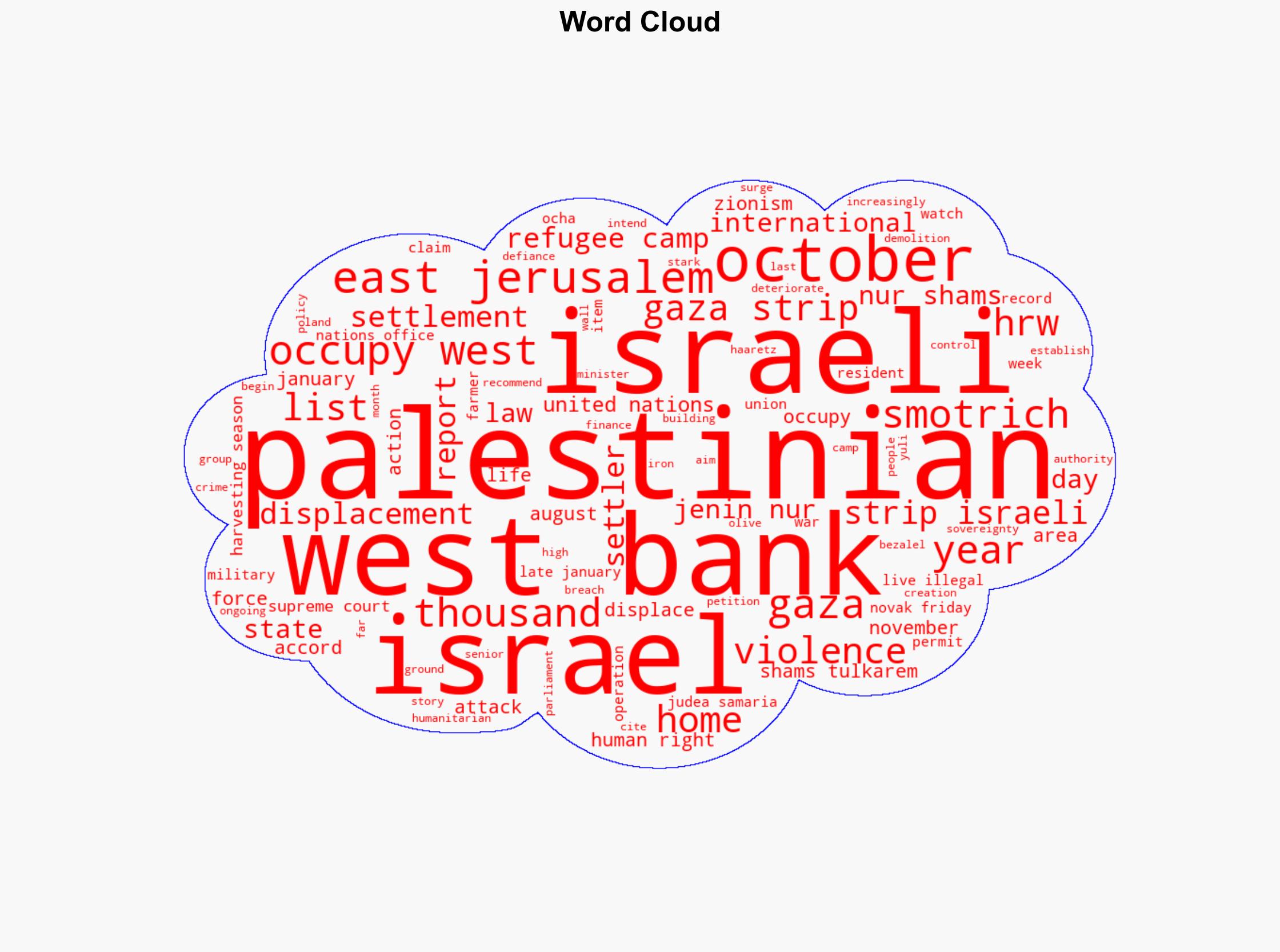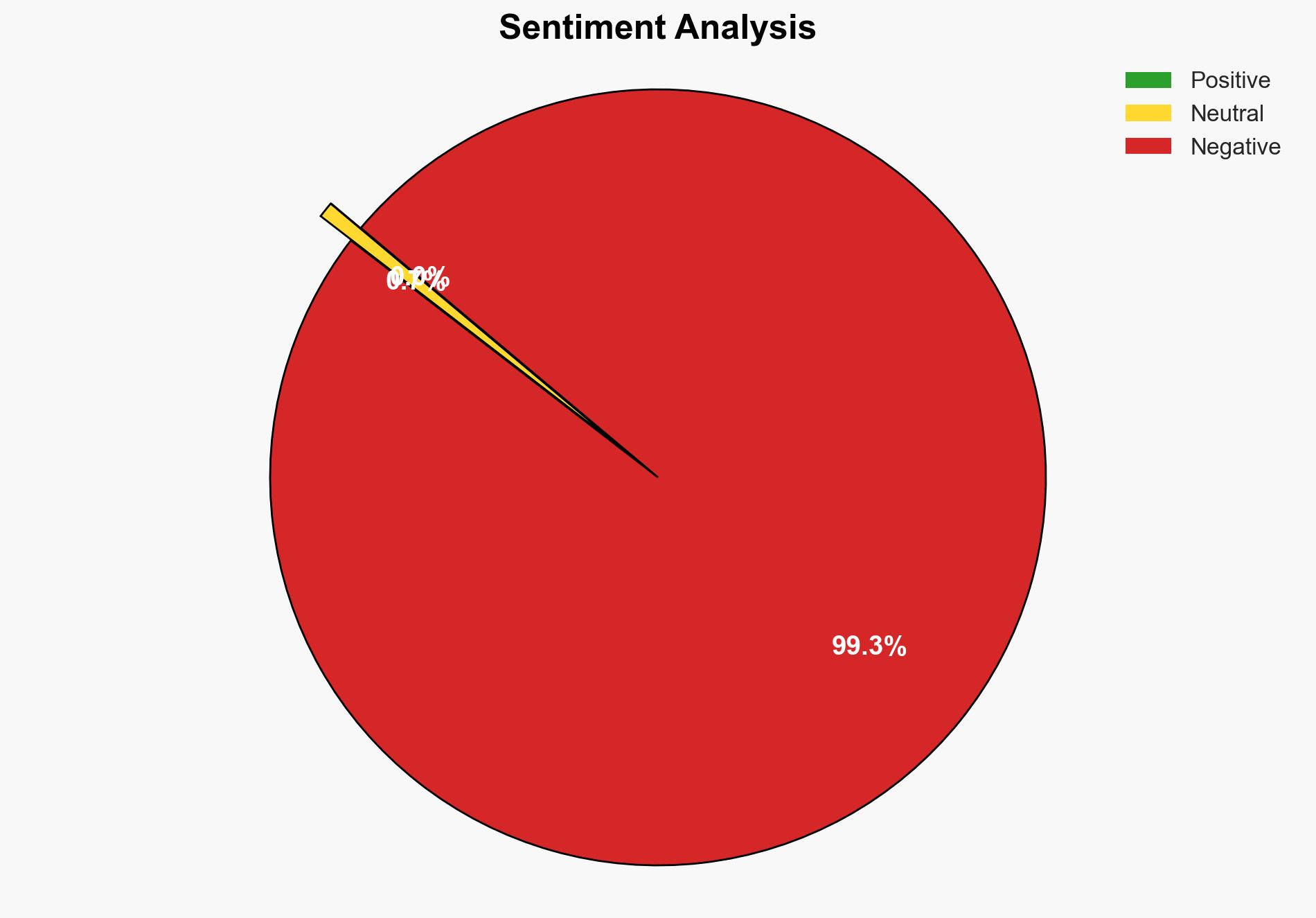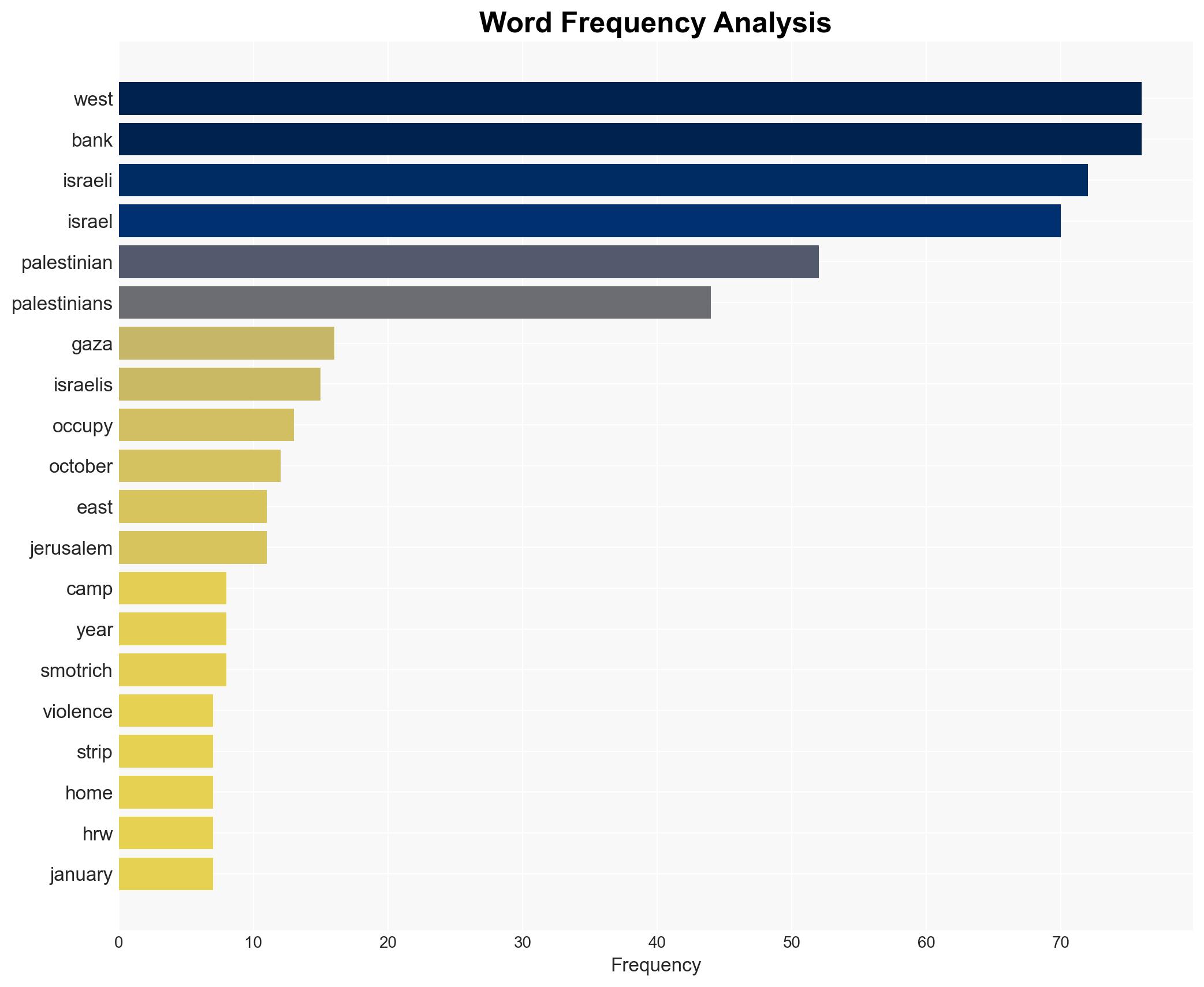Israels push to displace thousands of Palestinians from the West Bank
Published on: 2025-11-25
AI-powered OSINT brief from verified open sources. Automated NLP signal extraction with human verification. See our Methodology and Why WorldWideWatchers.
Intelligence Report:
1. BLUF (Bottom Line Up Front)
There is a high confidence level that Israel’s actions in the West Bank are strategically aimed at annexing the territory, as evidenced by legislative moves and settlement expansions. The most supported hypothesis is that Israel seeks to establish de facto control over the West Bank, undermining the possibility of a Palestinian state. Recommended actions include diplomatic engagement to address potential violations of international law and to mitigate regional instability.
2. Competing Hypotheses
Hypothesis 1: Israel is actively pursuing a strategy to annex the West Bank, as indicated by legislative actions and settlement expansions. This hypothesis is supported by statements from Israeli officials and recent legislative moves to extend Israeli sovereignty over the area.
Hypothesis 2: The displacement of Palestinians is primarily a security measure, with Israel responding to perceived threats from Palestinian groups. This hypothesis is less supported, as the scale and nature of the actions suggest a broader strategic intent beyond immediate security concerns.
3. Key Assumptions and Red Flags
Assumptions: It is assumed that Israel’s legislative and settlement activities are coordinated and reflect a unified government strategy. There is also an assumption that international responses will remain limited and largely diplomatic.
Red Flags: The lack of significant international repercussions for Israel’s actions could embolden further aggressive policies. Statements from Israeli officials may contain elements of strategic deception to downplay annexation intentions.
4. Implications and Strategic Risks
The annexation of the West Bank could lead to increased regional instability, potentially inciting violence and undermining peace efforts. Politically, it may strain Israel’s relations with key allies and provoke international condemnation. Economically, it could impact trade relations and lead to sanctions. Informationally, it may fuel anti-Israel sentiment and propaganda.
5. Recommendations and Outlook
- Engage in diplomatic efforts to encourage dialogue between Israel and Palestinian authorities.
- Monitor legislative developments within Israel for signs of further annexation moves.
- Prepare for potential humanitarian aid needs in response to displacement.
- Best-case scenario: Diplomatic interventions lead to a halt in annexation activities and renewed peace talks.
- Worst-case scenario: Full annexation leads to widespread violence and regional conflict.
- Most-likely scenario: Continued incremental annexation with limited international response.
6. Key Individuals and Entities
Bezalel Smotrich, Israeli Finance Minister, is a key proponent of settlement expansion and annexation. Human Rights Watch is actively monitoring and reporting on the situation.
7. Thematic Tags
Structured Analytic Techniques Applied
- Cognitive Bias Stress Test: Expose and correct potential biases in assessments through red-teaming and structured challenge.
- Bayesian Scenario Modeling: Use probabilistic forecasting for conflict trajectories or escalation likelihood.
- Network Influence Mapping: Map relationships between state and non-state actors for impact estimation.
Explore more:
National Security Threats Briefs ·
Daily Summary ·
Support us





